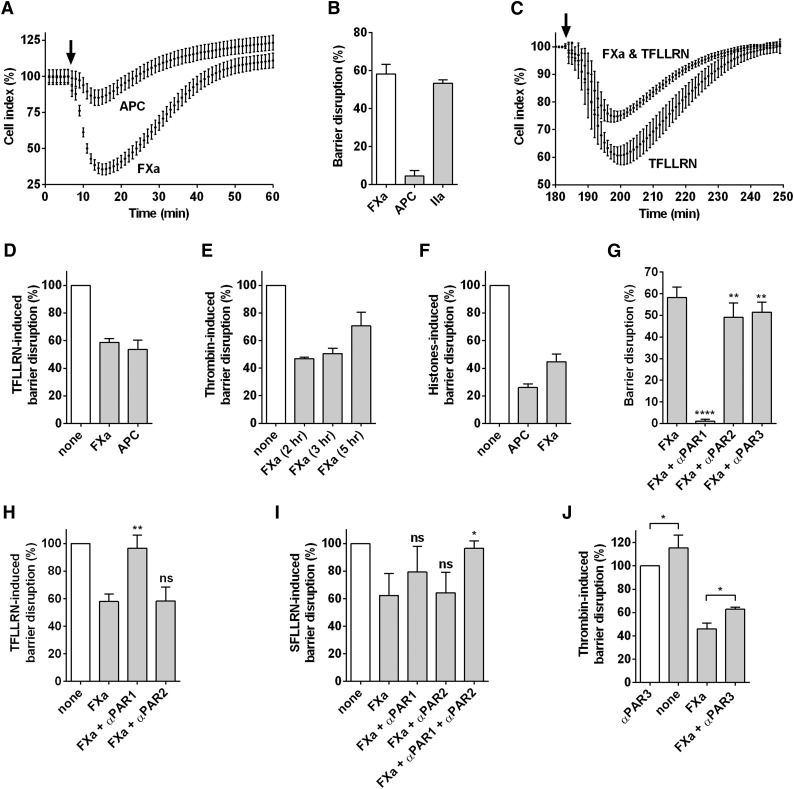Figure 4.
Endothelial barrier regulation by FXa. Effects of thrombin, APC, and FXa on endothelial barrier function by monitoring real-time changes in transendothelial electric resistance by ECIS in EA.hy926 cells. (A) Kinetics of the changes in cell index after addition of APC (25 nM) or FXa (25 nM). Cell index was normalized against nontreated cells (not shown). Arrow indicates the addition of APC or FXa. (B) Quantification of early effects on endothelial barrier function by FXa (25 nM), APC (25 nM), and thrombin (IIa) (2 nM). (C) Kinetics of the changes in cell index cells in the presence and absence of FXa (25 nM; 3 hours) induced by TRAP (TFFLRN; 10 µM). Arrow indicates the addition of TRAP. (D) Quantification of inhibition of TRAP-induced (TFLLRN; 10 µM) endothelial barrier permeability by FXa (25 nM) and APC (25 nM). (E) Time-dependent protection of endothelial barrier integrity by FXa (25 nM) against thrombin-induced (2 nM) permeability. (F) Protection of endothelial barrier function by APC (25 nM) or FXa (25 nM) against permeability induced by histones (10 µg/mL). (G) The effects of blocking PAR1 (WEDE15/ATAP2; 25 µg/mL), PAR2 (SAM11; 25 µg/mL), and PAR3 (H103/Moab19b; 25 µg/mL) antibodies on early FXa-induced (25 nM) endothelial barrier disruption. (H) The effect of blocking PAR1, PAR2, and PAR3 antibodies on protection of endothelial barrier integrity by FXa (25 nM) against barrier disruption induced by TFLLRN (10 µM). (I) The effects of blocking PAR1, PAR2, and PAR3 antibodies on protection of endothelial barrier integrity by FXa (25 nM) against barrier disruption induced by SFLLRN (10 µM). (J) FXa-mediated (25 nM; 3 hours) endothelial barrier protection in the presence of blocking antibodies against PAR3. Endothelial permeability was induced by thrombin (2 nM). The maximal permeability induced by thrombin in anti-PAR3 antibodies treated cells was considered as 100%. (D-F,H-I) Maximal permeability induced by TRAP, thrombin, or histones in nontreated cells was taken as 100%. (J) Maximal permeability induced by thrombin in the presence of blocking PAR3 antibodies was taken as 100%. (G-I) Statistical analysis of effects compared with FXa. (A-J) Data points represent mean ± SD of at least 3 independent experiments. *P < .05; **P < .01; ****P < .0001. ns, not significant.

